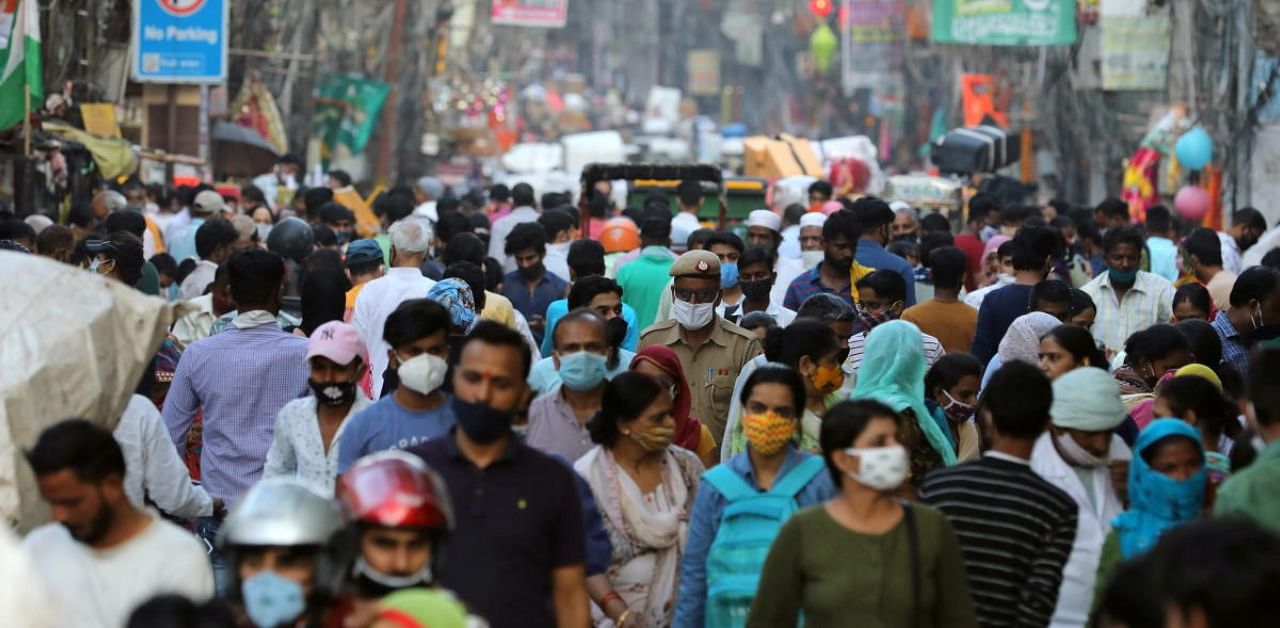
By Mihir Sharma
As Europe braces for a second wave of the coronavirus pandemic that in parts of the continent looks to be more intensive than the first, it is tempting to assume that the developing world has gotten off lightly. In India, which has the world’s second-highest total of Covid-19 cases, the number of new infections has been trending downwards since September. Other large developing nations flattened their curves even earlier: Brazil peaked in August and South Africa in July.
Back in March, we would have gratefully accepted this outcome: There were very real and logical fears that once the virus began to spread in poorer countries in Asia and Africa, their limited healthcare systems would struggle far more than Italy’s and Spain’s. It looks as though the world has dodged a bullet.
Yet, I am not at all sure that we should be confident about the winter and next year. Even in the best-case scenario, a vaccine will not be available in much of the developing world before the second half of 2021. There is more than enough time for new waves of transmission to strike between now and then.
That’s why the causes of Europe’s second wave and the continent’s response are so worrying. European nations opened up too much and, when curves began climbing again, they were much slower to lock down than they had been in the spring. Experts warned as early as August that summer vacations were causing new cases to spike. The response was tragically slow.
An unwillingness to lock down again is understandable even without appealing to some nebulous notion of “pandemic fatigue.” The plain fact is that we all understand now, a little better than in the spring, the enormous human and economic costs of strict lockdowns.
It is also true that the costs paid by the developing world, particularly those countries which instituted broad nationwide lockdowns, were even harsher. In South Africa, for example, where President Cyril Ramaphosa responded early and firmly to the virus, GDP fell by over 50% in annualized terms. India, which also shut down in late March, took a huge hit from its national lockdown, which was gradually eased over the summer.
In developing countries with minimal or leaky welfare systems, such costs are disproportionately borne by those who can least afford it. In Bangladesh, the poverty rate has risen 10 percentage points to almost 30% of the population since last year. According to the Dhaka-based think tank SANEM, it may cross 40% before the pandemic is done — a doubling of poverty that would bring the country back to where it was in 2005.
If and when another wave arrives in the developing world, then, which national leaders will be able to respond as strongly as they did in the spring? In India, politicians dread the thought of reimposing harsh restrictions on movement. The Indian state of Bihar is headed for elections and, given that a significant proportion of its 100 million people are migrant workers who were left stranded by the March lockdown, the government’s “callousness” has become a major issue in the polls.
That’s why it’s even more important for the developing world to avoid a second wave: The only tool that worked to control Covid-19’s spread may no longer be available. Earlier this year, poorer nations could at least benefit from Europe’s experience; public health techniques and therapeutics developed on the fly in the West could be adopted swiftly. And their younger populations helped keep hospitals from being over-burdened.
This time, the lessons from Europe are different. Most importantly, even if their primary focus has shifted to the economy and jobs, leaders must appreciate the difficult trade-offs to be made. Reopening for travel and leisure might seem like it is essential for struggling economies. But, as Europe’s second wave proves, the eventual costs of allowing the virus to spread through such laxness are even higher.
If the developing world wants to avoid lockdowns later, it will have to resist the urge to reopen fully now. That means no large indoor gatherings, no uncontrolled travel, no potential super-spreader events, continued strictness on social distancing. Whether you’re thinking in terms of lives or livelihoods, that’s the only choice available.